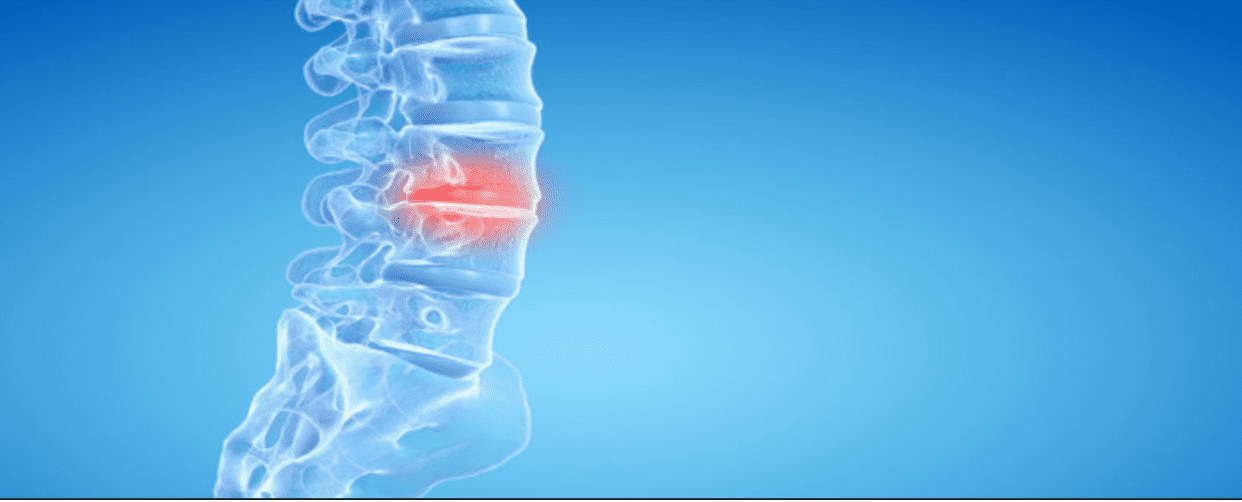
by Stemedix | Apr 19, 2021 | Degenerative Disc Disease
Degenerative disc disease is an age-related condition that occurs when the discs of the vertebrae, located in the spine, deteriorate. Symptoms may include weakness, numbness, and radiating pain. The discs are responsible for absorbing shock, allowing the back to move freely. As they wear out, their ability to protect the vertebrae becomes limited.
For people with the condition, symptoms like nerve and muscle pain, spinal instability, tingling and weakness in the muscles, and neurological symptoms may make it challenging to perform tasks. If your symptoms prevent you from being able to perform your work, having degenerative disc disease could qualify you for unemployment benefits. This is usually decided based on the degree of degeneration experienced.
While degenerative disc disease could require some modifications to your normal routine, however, it is possible to live a normal life with the condition.
Ways to Lead a Normal Life with Degenerative Disc Disease
Finding a supportive team of healthcare professionals is one important pillar of maintaining your quality of life with degenerative disc disease. These experts may recommend the following tactics for controlling symptoms, or a combination thereof:
- Optimizing your posture through physical therapy and ergonomic furniture to reduce pain
- Using heat and cold therapies to control pain levels as needed
- Seeking alternative treatments, such as regenerative medicine.
- Taking over-the-counter pain relievers, such as ibuprofen or acetaminophen
- Staying physically active with low-impact exercise to maintain strength, stamina, and flexibility
- Using physical therapy to maintain strength and range of motion in the back and neck
Thus, even if you have to be out of work for some time or indefinitely, there are many lifestyle tactics and therapies you can explore to feel your best while living with this disease. If you would like to learn more then contact us today and one of our care coordinators will be happy to help!

by Stemedix | Mar 29, 2021 | Uncategorized
One of the most common causes of lower back pain, degenerative disc disease is an umbrella term for the symptoms that result from general wear and tear on a spinal disc. In addition to back pain, it can also cause shooting pains in the extremities, weakness, and numbness. In this article, we will talk about the best treatment for Degenerative Disc Disease.
While the condition can be frustrating, there are many ways to manage its symptoms. In fact, most cases involve periodic flare-ups, but the pain typically doesn’t intensify over time. For this reason, many people can avoid surgery for degenerative disc disease.
Instead of going directly to surgical interventions, the goals of treating the condition usually entail:
- Relieving pain to the point that patients can participate in rehabilitation programs or perform exercises at home without discomfort.
- Preventing added stress to the back using ergonomics and improved posture.
- Managing discomfort so individuals can go about their normal routine uninterrupted.
There are many lifestyle modifications, self-care options, and clinical therapies that can be tried before resorting to more invasive procedures. Here are a few common approaches:
- Pain relievers: Over-the-counter pain medications such as NSAIDs and acetaminophen may help control pain levels during particularly intense flare-ups.
- Chiropractic care: Some individuals find that manual manipulation performed by a chiropractor can reduce the pressure on sensitive areas of the back.
- Epidural injections: Spinal injections deliver steroids directly to the compromised area of the back to reduce inflammation and thus relieve pain.
- Ultrasound: Ultrasound technology brings warmth to affected areas through sound waves, increases blood flow, and could potentially stimulate healing in some back injuries.
- Massage therapy: Massage increases blood flow, alleviates tension in the muscles, and triggers the release of endorphins, all of which can help reduce pain levels.
- TENS units: Using electrical stimulation, these units override pain signals in affected areas.
Some patients also use acupuncture and home therapies such as cool or warm compresses to reduce back pain caused by degenerative disc disease. Beyond these treatments, here are a few lifestyle modifications that may also help:
- Smoking cessation: Smoking depletes oxygen, which your body needs to perform its best. Tobacco use and chronic pain often go hand-in-hand, so quitting could help you find relief.
- Exercise: Working out may seem counterintuitive when you’re in pain, but many patients can achieve long-term healing through exercise. Aim for a combination of strengthening, stretching, and low-impact cardio moves.
- Weight loss: Added weight puts stress on your spine, potentially intensifying your degenerative disc disease. Weight loss could reduce the stress on vertebrae and discs, alleviating back pain.
- Ergonomics: Ergonomics is the application of physiological principles to products such as furniture and footwear to help support healthy posture and minimize back pain. If you suspect your work environment could be contributing to your back soreness, it’s worth looking into supportive shoes, ergonomic furniture, and modifications to your posture.
In addition to these treatments and lifestyle changes, patients seeking a nonsurgical treatment for degenerative disc disease may consider stem cell therapy. This form of regenerative medicine works at the site of injury and uses the body’s natural healing properties delivered through stem cells to repair and regenerate tissue. This treatment has been well-tolerated in studies and presents minimal risk and downtime, offering a convenient alternative to invasive procedures. If you want to learn more then contact a care coordinator today!

by admin | Nov 13, 2019 | Stem Cell Research, Exosomes, Mesenchymal Stem Cells
The spinal column is made up of more than a dozen vertebral bones stacked on top of each other. Since the spine is not a single bone, it is capable of pivoting and bending, which gives the torso a degree of flexibility. A key part of this structure relies on the substance between the vertebral bones called the intravertebral disc.
The intravertebral disc is made up of the annulus fibrosis (the tough outer ring) and the nucleus pulposus (the jelly-like inner core). Each intervertebral disc acts as a shock absorber between the vertebral bones. Over time and with age, however, the intervertebral disc tends to breakdown. This can cause called degenerative disc disease, which includes herniated discs (“slipped discs”), pinched nerves, neck and back pain, and nerve problems. Obviously, finding ways to reverse or prevent intravertebral discs from breaking down is of great medical and scientific interest and for the countless patients with degenerative disc disease.
As with other groups interested in regenerative medicine, researchers have turned to stem cells in an effort to regenerate tissue within the intravertebral disc. One research group reported their recent success using bone marrow-derived mesenchymal stem cells. The scientists collected exosomes—very small packets filled with highly concentrated molecules such as proteins, microRNA, transcription factors and lipids—from these stem cells. In this study, researchers also collected exosomes from nucleus pulposus cells and tested the exosomes in various ways.
The researchers found that exosomes could send out signals to bone marrow mesenchymal cells and call them to the intervertebral disc. The exosomes also prompted the stem cells to become new nucleus pulposus-like cells. Conversely, exosomes from bone marrow mesenchymal cells caused nucleus pulposus cells to grow and multiply (i.e. proliferate). Finally, exosomes helped the tissue in degenerating vertebral discs to express the same genes as healthy discs.
While these results are complex, they suggest that exosomes from bone marrow mesenchymal cells and nucleus pulposus cells work together to recruit and make more healthy cells in degenerating vertebral discs. This could have profound implications for the millions of people with degenerative disc disease. If these results are confirmed in clinical trials, it would mean that exosomes could be used to prevent or reverse degenerative disc disease. We anxiously await further work in this exciting field.
Reference: Kang L. et al. (2017). Exosomes as potential alternatives to stem cell therapy for intervertebral disc degeneration: in-vitro study on exosomes in interaction of nucleus pulposus cells and bone marrow mesenchymal stem cells. Stem Cell Research Therapy. 2017; 8: 108.

by admin | Apr 3, 2019 | Pain Management, Stem Cell Research
Chronic low back pain is a common condition that can significantly reduce the quality of life. The degeneration of the intervertebral disc is one cause for low back pain, and there is no therapeutic intervention that effectively reverses this type of degeneration. Both non-surgical and surgical treatments that are currently used for chronic low back pain aim to help the symptoms associated with the condition but do not address the underlying cause. Recently, however, researchers have begun to explore the ways in which stem cells may be used to help regenerate the intervertebral disc to restore functioning and eliminate low back pain over the long-term. A review of the relevant literature was recently published in Translational Pediatrics.
The intervertebral disc does not have a large potential to regenerate itself, so it is a challenge to find the best cell sources to facilitate such regeneration. Adult mesenchymal stem cells, which are found most often in bone marrow and also in fat, or adipose, tissue are attractive candidates for this type of regeneration given their high capacity to proliferate and to differentiate into different types of cells. In addition, they can self-renew, are highly accessible, and unlike some other types of stem cells, there are no ethical issues associated with their retrieval.
Given the success of mesenchymal stem cell transplantation in preclinical studies of intervertebral disc degeneration, the use of these cells has progressed to clinical trials. Autologous bone marrow mesenchymal stem cells – meaning stem cells taken from the bone marrow of the patients themselves – have been reported in the treatment of disc degeneration in patients with leg and back pain. Reduced pain has been observed at one and two years after transplantation. Importantly, the clinical trials investigating the use of stem cells in intervertebral disc regeneration have provided evidence that the relevant procedures are not only effective but also clinically safe. Future research will help to clarify if and how these and other types of stem cells may be used to reverse intervertebral disc regeneration and the associated chronic low back pain.
Reference: Wei, A. et al. (2014). Mesenchymal stem cells: potential application in intervertebral disc regeneration. Translational Pediatrics, 3(2), 71-90.

by admin | Jan 10, 2019 | Health Awareness, Multiple Sclerosis
The complex interplay between nutrition and health is still being researched by experts. In many cases, there are already established links between certain foods and undesirable health outcomes. For example, recent dietary guidelines recommend limiting added sugars to 10% of your daily calories or less, as they’re associated with an increased risk of heart disease. For individuals with chronic diseases, it’s perhaps even more important to consider the ways food can impact health.
For those with Multiple Sclerosis (MS),
optimizing your diet means not only filling your plate with healthy foods, but
also avoiding or limiting foods known to exacerbate symptoms. Research shows
that in particular, patients with MS have been able to improve their quality of
life by making specific tweaks
to their diet. Discover which foods
you should discuss with your doctor as a means of controlling your symptoms.
Fats
Saturated fats are commonly found in animal products,
including red meat. These foods aren’t entirely void of nutritious qualities –
after all, they can be rich sources of protein. Yet, their high concentration
of saturated fats presents issues, as they could raise “bad” cholesterol
levels. This is especially of concern for MS patients, who face a higher risk
for heart problems than people without MS.
Trans fats, too, are considered dangerous. Sometimes labeled
as “partially hydrogenated oils,” these fats are known to increase
inflammation, particularly within the blood vessels. This, too, increases the
risk of cardiovascular issues. Steer clear of packaged cookies, crackers, and dessert
items, or at the very least, be sure to enjoy them sparingly.
Sugar
We mentioned briefly above that added sugars are notorious
for their adverse health effects. Not only does excess
sugar lead to weight gain, but it also produces an inflammatory effect
which can intensify MS symptoms. Natural sugars, including those found in
fruits, don’t have the same effect, so feel free to snack on those instead.
Sodium
Added salt presents a number of issues for MS patients. In
general, higher sodium intake is associated with increased
disease activity in MS, and has been found to increase likelihood of
relapse and development of lesions. Sodium intake and blood pressure are also
related, and because high blood pressure can decrease life expectancy in MS
patients, added salt should be consumed at a minimum.
Dairy
Like meat, cow’s milk and other full-fat dairy products are high
in saturated fats. Besides the fat content, however, specific proteins in the
milk could cause trouble for people with MS. These agents could produce a
reaction in multiple sclerosis sufferers, but research shows
the link isn’t very strong. However, it may be worth replacing cow’s milk and
other full-fat dairy products with alternatives to see if it alleviates your
symptoms. Consider exploring options such as soy, almond, or even camel’s
milk.
Gluten
Gluten is primarily a concern for people with celiac
disease, which is characterized by an allergy to the protein found in rye,
wheat, and barley. Consuming gluten can cause intestinal damage in people with
the allergy. Because MS patients have a higher incidence
of celiac disease than the general population, it may be useful to closely
monitor your body’s reaction to consuming bread, cereal, pasta, and other foods
with gluten. While there is currently no evidence suggesting avoidance of
gluten can alleviate MS symptoms in patients who don’t have celiac disease, it never
hurts to bring up any food-related concerns you may have with your physician.






 St. Petersburg, Florida
St. Petersburg, Florida
